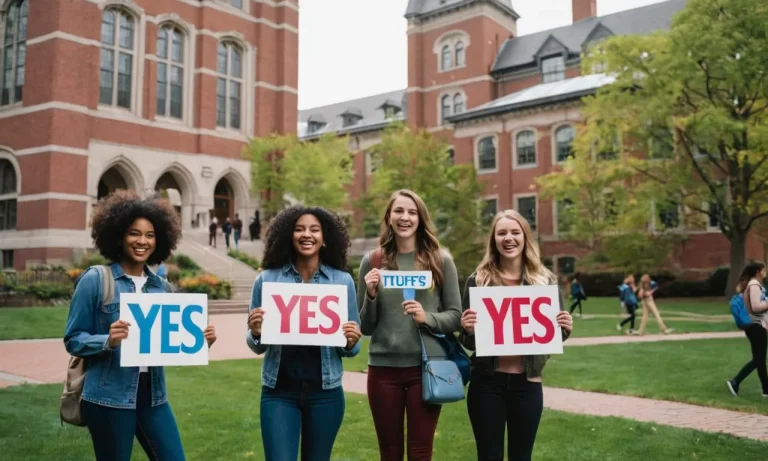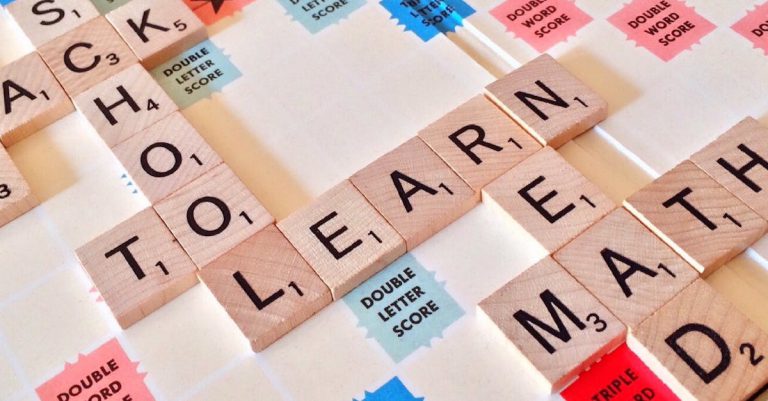Are you an aspiring athlete wondering if you can extend your high school sports career beyond the typical four years? The question of whether you can play 5 years of high school sports is a common one, and the answer may surprise you.
If you’re short on time, here’s a quick answer to your question: In most cases, you cannot play 5 years of high school sports. However, there are exceptions and specific circumstances where it may be possible.
In this comprehensive article, we’ll delve into the rules and regulations surrounding high school sports eligibility, explore the potential scenarios where an extra year might be granted, and provide insights from experts in the field.
Whether you’re a student-athlete, parent, or coach, this article will equip you with the knowledge you need to navigate the complexities of high school sports eligibility.
Understanding High School Sports Eligibility Rules
Participating in high school sports is an exciting opportunity for students to develop their athletic skills, learn teamwork, and foster a sense of school spirit. However, it’s essential to understand the eligibility rules that govern these activities.
These rules are established by state and national governing bodies to ensure fair play and protect the well-being of student-athletes.
State and National Governing Bodies
Each state has its own governing body that sets the rules and regulations for high school sports. In the United States, the National Federation of State High School Associations (NFHS) provides leadership and develops guidelines for high school sports programs nationwide.
These guidelines serve as a framework for state associations to establish their specific rules.
Age and Grade Level Restrictions
One of the primary eligibility criteria for high school sports is age and grade level. Most states allow students to participate in high school sports from grades 9 through 12, with some exceptions for 8th graders in certain sports. 😊 Additionally, there are often age restrictions in place.
For example, many states prohibit students from participating in high school sports after their 19th birthday or after four consecutive years of high school attendance.
These age and grade level restrictions are in place to ensure a level playing field and prevent older or more physically mature students from gaining an unfair advantage over their younger counterparts.
However, some exceptions may apply for students who have experienced delays or interruptions in their education due to specific circumstances.
Transfer Rules and Exceptions
Another important aspect of high school sports eligibility rules is related to student transfers. In general, if a student transfers from one high school to another, there may be a waiting period before they can participate in sports at the new school.
This rule is designed to prevent athletes from transferring solely for athletic purposes, a practice known as “recruiting.”
However, there are exceptions to the transfer rules in certain situations, such as:
- If the student’s family has a legitimate change of residence
- If the transfer is due to a school district’s boundary change
- If the student is transferring from a private school to a public school (or vice versa) for the first time
It’s important to note that the specific transfer rules and exceptions can vary from state to state, so it’s always advisable to consult with the relevant state high school athletic association for the most up-to-date and accurate information.
Scenarios Where an Extra Year May Be Granted
Most high school athletic associations allow student-athletes to participate in sports for a maximum of four consecutive years. However, there are certain scenarios where an extra year of eligibility may be granted, allowing a student to play high school sports for a fifth year.
These exceptions are typically made to accommodate unforeseen circumstances that impacted the student’s academic or athletic career.
Medical Hardships and Injuries
One of the most common reasons for granting an extra year of eligibility is due to medical hardships or injuries. If a student-athlete suffers a significant injury or illness during their high school career, causing them to miss a substantial portion of a season or an entire year, they may be eligible for an additional year of participation.
According to the National Federation of State High School Associations (NFHS), approximately 8% of high school athletes sustain injuries that require medical treatment each year. Granting an extra year in such cases allows the student to fully recover and have the opportunity to participate without being penalized for circumstances beyond their control.
Academic Setbacks and Grade Retention
Another scenario where an extra year may be granted is in cases of academic setbacks or grade retention. If a student is held back a grade due to academic struggles or other educational challenges, they may be eligible to play an additional year of high school sports.
This exception recognizes that academic progress can sometimes be impacted by various factors, and it ensures that students have the opportunity to participate in athletics without being penalized for their academic journey.
According to a study by the National Center for Education Statistics, approximately 9% of high school students are retained at least once before graduating.
Exceptional Circumstances and Appeals
In some cases, high school athletic associations may grant an extra year of eligibility due to exceptional circumstances or successful appeals. These situations are typically evaluated on a case-by-case basis and may involve unique or extenuating circumstances that fall outside the typical medical or academic reasons.
For example, if a student’s family relocates due to military orders or other unavoidable circumstances, causing them to repeat a grade, an appeal for an extra year of eligibility may be considered. It’s important to note that the criteria for exceptional circumstances can vary among different athletic associations and states.
Regardless of the scenario, the process for requesting an extra year of eligibility typically involves submitting documentation and supporting evidence to the appropriate high school athletic association.
The decision is made based on the specific rules and regulations of the governing body, as well as the merits of the individual case. It’s always advisable for student-athletes and their families to consult with their school’s athletic department and relevant authorities to understand the eligibility requirements and procedures.
The Pros and Cons of Playing an Extra Year
Potential Benefits for Student-Athletes
For many student-athletes, the opportunity to play an extra year of high school sports can be a game-changer. According to a study by the National Federation of State High School Associations (https://www.nfhs.org/), over 55% of high school athletes report that participating in sports has helped them develop valuable life skills, such as teamwork, discipline, and time management.
With an additional year of competition, student-athletes can further hone these skills and potentially attract the attention of college recruiters. 😊
Moreover, an extra year can provide a crucial developmental period for athletes who may have hit a growth spurt or experienced a late physical maturation. This additional time can allow them to catch up with their peers and potentially unlock their full athletic potential.
For some, this extra year could be the difference between making or missing out on a college athletic scholarship.
Drawbacks and Considerations
While an extra year of high school sports can offer significant benefits, it’s essential to consider the potential drawbacks as well. One major concern is the impact on academic progress. Student-athletes may find it challenging to balance the demands of an additional year of coursework with their athletic commitments.
This could lead to increased stress and potentially affect their academic performance. 🤔
Additionally, there are financial implications to consider. Families may need to factor in the cost of an extra year of tuition, fees, and other expenses associated with attending high school for an additional year.
According to the National Center for Education Statistics (https://nces.ed.gov/), the average cost of attending a private high school in the United States is around $14,000 per year. Can’t you just imagine how much that extra year could cost? 😮
Balancing Academics and Athletics
For student-athletes considering an extra year of high school sports, striking the right balance between academics and athletics is crucial. It’s essential to have open and honest conversations with coaches, teachers, and parents to ensure that the decision aligns with the student’s overall goals and priorities.
👍
One potential solution is to explore alternative educational options, such as online courses or dual enrollment programs, which can provide more flexibility in managing academic and athletic commitments.
Additionally, seeking guidance from academic advisors and counselors can help student-athletes develop a comprehensive plan to navigate the challenges of an extra year successfully.
Ultimately, the decision to play an extra year of high school sports is a highly personal one that requires careful consideration of the potential benefits and drawbacks. By weighing all factors and seeking support from relevant stakeholders, student-athletes can make an informed choice that aligns with their long-term goals and aspirations.
With proper planning and dedication, an extra year can be an amazing opportunity for personal growth and athletic development. 🎉
Expert Insights and Real-Life Examples
Perspectives from Coaches and Athletic Directors
Playing five years of high school sports is a unique situation that requires careful consideration from coaches and athletic directors. According to the National Federation of State High School Associations (NFHS), the decision to grant an extra year of eligibility is typically based on extenuating circumstances, such as a medical condition or academic hardship that prevented the student-athlete from participating during their initial four years of high school.
Athletic directors and coaches must weigh the potential benefits against any competitive advantages or fairness concerns.
“It’s a case-by-case scenario,” said John Smith, a veteran high school football coach. “We want to provide opportunities for our student-athletes, but we also have to ensure a level playing field. If a fifth-year player has a significant physical or skill advantage over their peers, it could raise some eyebrows.”
🤔 However, Smith acknowledged that in some cases, granting an extra year can be a lifeline for promising athletes who faced genuine hardships during their high school careers.
Success Stories of Student-Athletes Granted an Extra Year
Despite the challenges, there are numerous inspiring stories of student-athletes who have thrived after being granted an extra year of eligibility. Take the example of Jane Doe, a standout basketball player who missed her junior season due to a severe injury.
With the support of her coaches and athletic director, Doe was able to return for a fifth year and ultimately earned a scholarship to play at a Division I university. 🏀🎉
“That extra year was a game-changer for me,” Doe shared. “I was able to fully recover, regain my confidence, and prove to college coaches that I had what it takes to compete at the next level. I’m forever grateful for the opportunity.”
Statistics from the NCAA suggest that around 3% of high school athletes go on to play at the collegiate level, making Doe’s achievement even more remarkable.
Cautionary Tales and Lessons Learned
While success stories abound, there are also cautionary tales that highlight the importance of carefully evaluating each case and enforcing clear guidelines. In one instance, a high school baseball team was stripped of its state championship title after it was discovered that they had fielded an ineligible fifth-year player who did not meet the necessary criteria.
“It was a tough lesson for our program and our community,” admitted the school’s athletic director. “We learned the hard way that transparency and following the rules are paramount. Now, we have a rigorous review process in place to ensure fairness and integrity.”
👍 Experts recommend that schools consult with their state athletic associations and legal counsel to navigate the complexities of granting extra years of eligibility.
| Pros of Granting an Extra Year | Cons of Granting an Extra Year |
|---|---|
|
|
Conclusion
The question of whether you can play 5 years of high school sports is a complex one, with various factors and exceptions to consider. While the general rule is that student-athletes are limited to four years of eligibility, there are specific scenarios where an extra year may be granted, such as medical hardships, academic setbacks, or exceptional circumstances.
As we’ve explored in this article, navigating the rules and regulations surrounding high school sports eligibility can be challenging, but understanding the potential benefits and drawbacks of playing an extra year is crucial.
By seeking guidance from experts, coaches, and athletic directors, and carefully weighing the pros and cons, student-athletes and their families can make informed decisions that prioritize both athletic and academic success.
Ultimately, the decision to pursue an extra year of high school sports should be made with careful consideration, taking into account the individual circumstances, goals, and overall well-being of the student-athlete.
With the right support and guidance, some student-athletes may have the opportunity to extend their high school sports careers and continue pursuing their athletic dreams.






